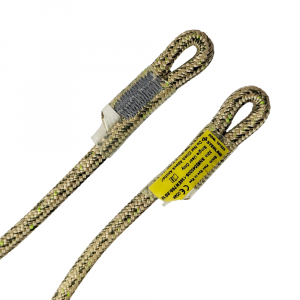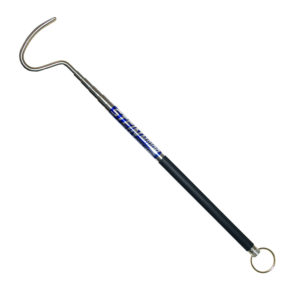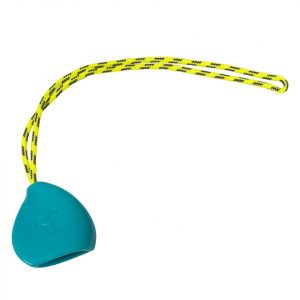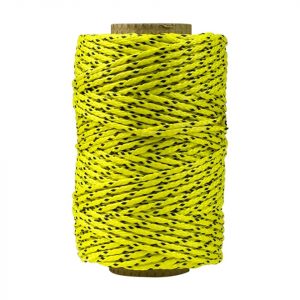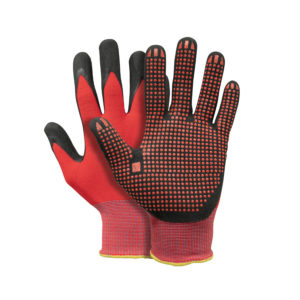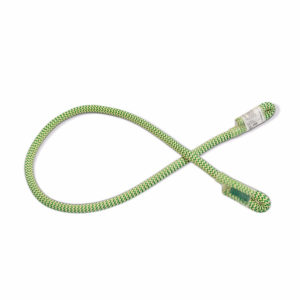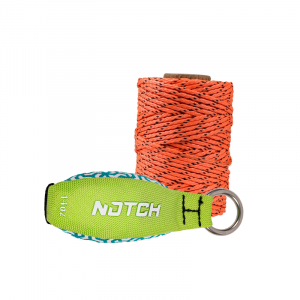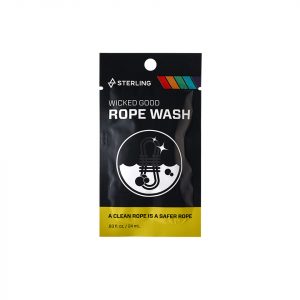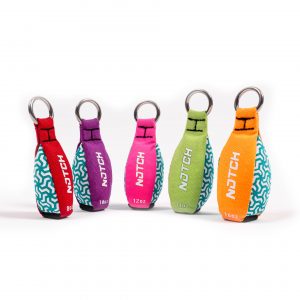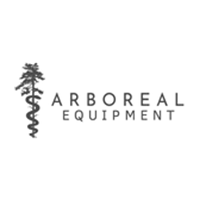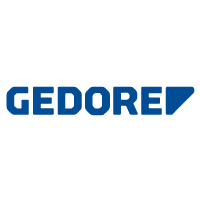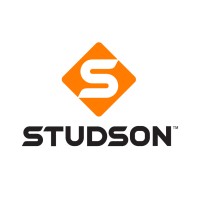Description
The popular climbing rope from TEUFELBERGER
The Tachyon from TEUFELBERGER is one of the most successful climbing ropes among the 24-strand ropes.
Tachyon is provided with a firm yet flexible construction. It consists of a polyester cover which significantly improves friction hitch performance without “bagginess”. The core consists of a polyamide inner core. This inner core construction keeps the diameter consistent, even in the loaded state. The rope diameter of 11.5 mm is ideal for tree care operations. It ensures a better grip, thus reducing hand fatigue. Tachyon is certified to EN 1891A as well as ANSI Z133-2012. It works perfectly in combination with standard hardware designed for use with 11 mm ropes.
Tachyon excels due to:
- Low stretch at low loads for less bounce while climbing
- High stretch at high loads thus minimizing the shock effect in the event of a fall
- Consistent diameter while climbing thus ensuring an improved grip
- Great ease of splicing
| Diameter |
Min. breaking strength, free length [daN] |
Min. breaking strength, free length [lbf] |
Weight [g/m] |
Weight [lbf/100] |
|
11mm (7/16″)
|
2 625
|
5 900
|
94
|
6.30
|
Our splices are certified to EN1891:1998
Sunlight/UV:
Very little degradation from sunlight. Can be used outside over long term if inspected regularly.
Chemicals:
Nylon will degrade with h3 oxidizing agents, mineral acids, and 90% formic acid. May discolor when exposed to high levels of carbon dioxide. Polyester has good resistance to most chemicals, except 95% sulfuric acid and h3 alkalines at boil. Polypropylene has excellent resistance to most acids and alkalines, except chlorosulphonic, concentrated sulfuric acids, and chlorinated hydrocarbons at 160 F. Additionally polypropylene withstands most diluted bleaching solutions.
Heat:
Nylon melts at 460 F with progressive strength loss above 300 F. Polyester melts at 480 F with progressive strength loss above 300 F. Polypropylene melts at 300 F with progressive strength loss above 200 F.
Dielectrics:
Good resistance to the passage of electrical current. However, dirt, surface contaminants, water entrapment, and the like can significantly affect dielectric properties. Extreme caution should be exercised any time a rope is in the proximity of live circuits.
Sheaves:
N/A
Working Loads:
No blanket safe working load (SWL) recommendations can be made for any line because SWL's must be calculated based on application, conditions of use, and potential danger to personnel among other considerations. It is recommended that the end user establish working loads and safety factors based on best practices established by the end user's industry; by professional judgment and personal experience; and after thorough assessment of all risks. The SWL is a guideline for the use of a rope in good condition for non-critical applications and should be reduced where life, limb, or valuable property is involved, or in cases of exceptional service such as shock loading, sustained loading, severe vibration, etc. The Cordage Institute specifies that the SWL of a rope shall be determined by dividing the Minimum Tensile Strength of the rope by a safety factor. The safety factor ranges from 5 to 12 for non-critical uses and is typically set at 15 for life lines.
Rope Care
New England Ropes takes great pride in manufacturing the highest quality rope available. Below are a few guidelines regarding general care and usage practices which will help to extend the life of the rope while achieving the best possible performance.
Abrasion and Sharp Edges
Abrasion and sharp edges are a ropes worst enemies. Check all equipment prior to use to ensure there are no burrs or sharp edges. Always inspect ropes after climbing in abrasive environments to assess damage related to wear.
Dirt and Cleaning
Dirt on a rope can penetrate the cover strands resulting in abrasion in the core as well as the cover. Water facilitates the introduction of dirt particles into the rope.
After a climb, wash rope with fresh water and allow to air dry out of direct sunlight. For a more thorough cleaning, soak your rope in warm water mixed with a mild detergent. Add a small amount of fabric softener to soften the rope. When possible, use a front loading washing machine; wash your rope in a mesh bag or pillowcase to avoid tangling. Rinse thoroughly and hang to dry in indirect sunlight.
Eliminating Twist
Twist increases the likelihood of kinking and jamming in equipment. Severe twist can cause the rope to get out of round, resulting in higher wear rates and reduced strength. Eliminating twist from a rope will make the rope easier to handle and extend its life. Eliminate twist by either laying the rope straight and coiling it into a figure eight hank, or by feeding it into a bag while the loose end remains free.
Safety
Snapback: An extremely hazardous situation can result if a rope parts under a heavy load. Rope can recoil at a high rate of speed and a person positioned in the path of a parted rope can be seriously injured. It is the responsibility of the user to know and understand the proper techniques for particular application and to take all necessary safety precautions.
Chemicals: Synthetic fibers have good chemical resistance. However, exposure to harsh chemicals such as acids and alkalis should be avoided. Damage: Inspect all ropes frequently for signs of wear or damage. Retire any rope that has been cut or abraded. Sunlight: Over time, all synthetic fibers will undergo degradation when exposed to sunlight. Polypropylene is more susceptible to UV degradation than other fibers.
Tensile Strength
Tensile strength is the load at which a new rope, tested under laboratory conditions, can be expected to break. Rope strength (as shown in our literature) is the approximate average for new rope tested under ASTM test method D-6268. To estimate the minimum tensile strength of a new rope, reduce the approximate average by 20%. Age, usage and the type of termination used will significantly lower tensile strengths.
Working Loads
The Cordage Institute specifies that the safe working load of a rope is determined by dividing the minimum tensile strength by the ropes safety factor. Safety factors range from 5 to 12 for non-critical uses. The working load is a guideline for rope in good condition used in non-critical applications and should be reduced where life, limb or valuable property are involved, or where exceptional shock, sustained loading, severe vibration, etc. may be experienced.
Strength in Every Strand: The Importance of Fiber and Construction
New England Ropes combines the highest quality fibers with the most advanced construction technology. Every rope we manufacture acts as an integral component of a complex system, each with different performance requirements.
Nylon
for example, is recognized for its outstanding strength, elasticity and abrasion resistance. It is an ideal fiber for dynamic climbing ropes due to its ability to arrest a potential fall.
Polyester
on the other hand, has high strength and low stretch characteristics which are well suited for static applications where bounce and stretch are not desirable.
Continual innovation of our extensive designs ensures we manufacture the appropriate products to support all of your climbing applications.
Single Braid
A flexible, supple construction that absorbs twist and resists kinking. Construction used in MFP Throwline and Treeline.
Double Braid
A braided cover surrounds a braided core, producing a rope designed for strength, durability, shape and easy handling. Construction used in static and specialty ropes, including Water Rescue Rope, Polyester Double Braid and NFPA Throwline.
Parallel Core
A patented unidirectional fiber core with a braided cover, for a rope with lower stretch higher strength line than a double braid rope of equal size. Construction used in Tech Cord and PCRU.
3 Strand
Four-stage, balanced construction leveraged with an advanced stabilization process produces a durable, long lasting and flexible rope that wont harden with age. 3-strand rope is ideal for applications where grip, abrasion resistance and stretch are critical factors. Construction used in 3-Strand Safety Blue, 3-Strand Safety Blue Hi-Vee, 3 Strand Polyester, Filament Nylon and Multiline II and many of NE Ropes factory-spliced lanyards.
Kernmantle
A braided jacket covers bundles of twisted, spring-like fibers. Designed to absorb energies generated by a fall, this rope is ideal for dynamic and static ropes that must remain firm and round, yet run freely through mechanical devices. Construction used in all of NE Ropes dynamic climbing ropes, specifically KM III, KMIII Max, Braided Safety Blue, Braided Safety Blue Hi Vee and Nylon Accessory Cords.



